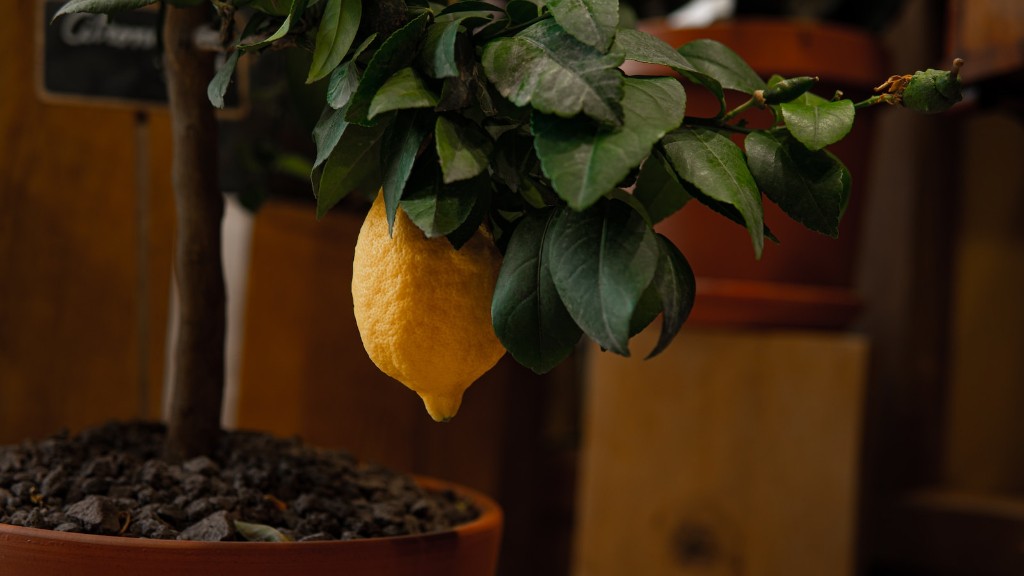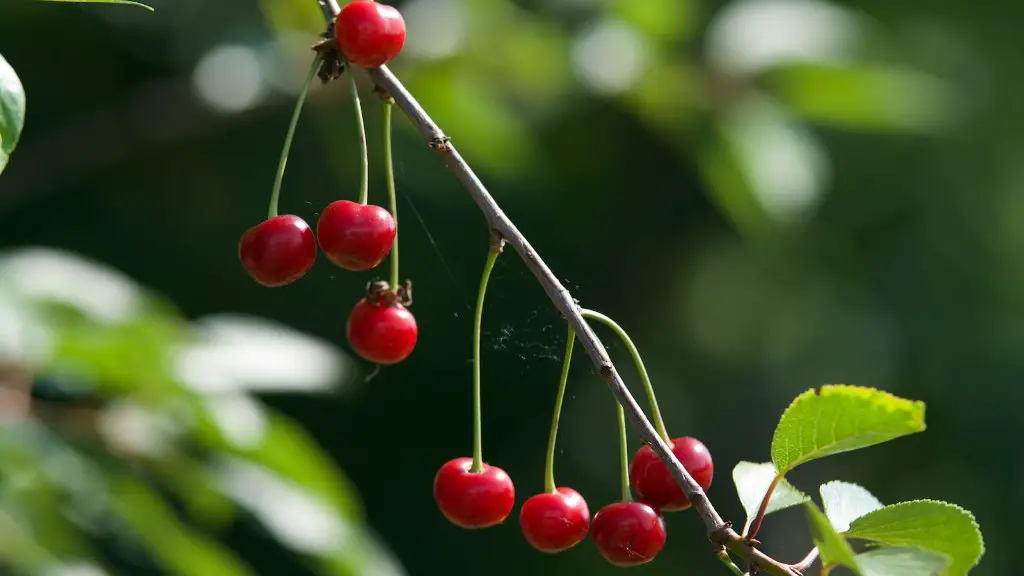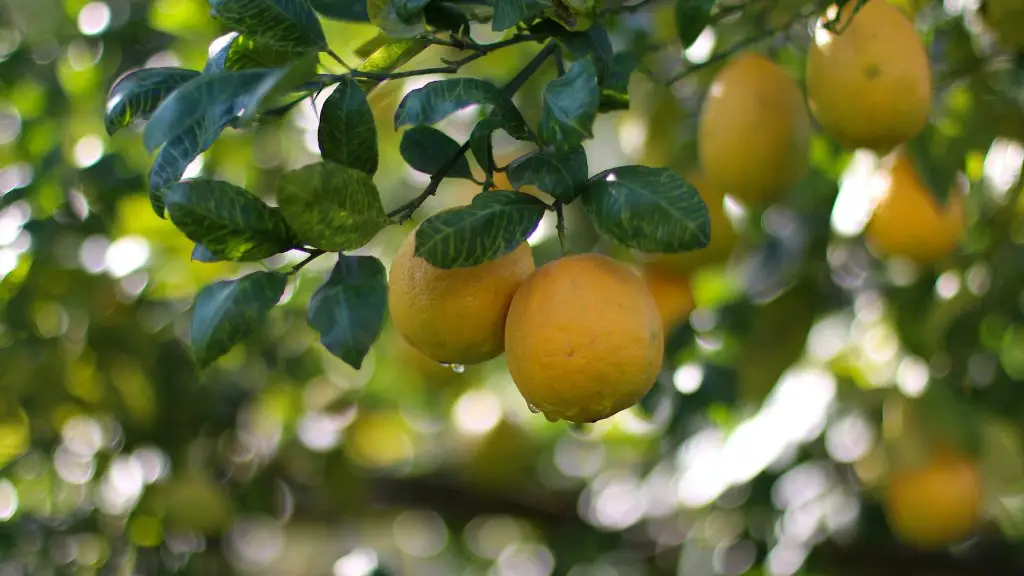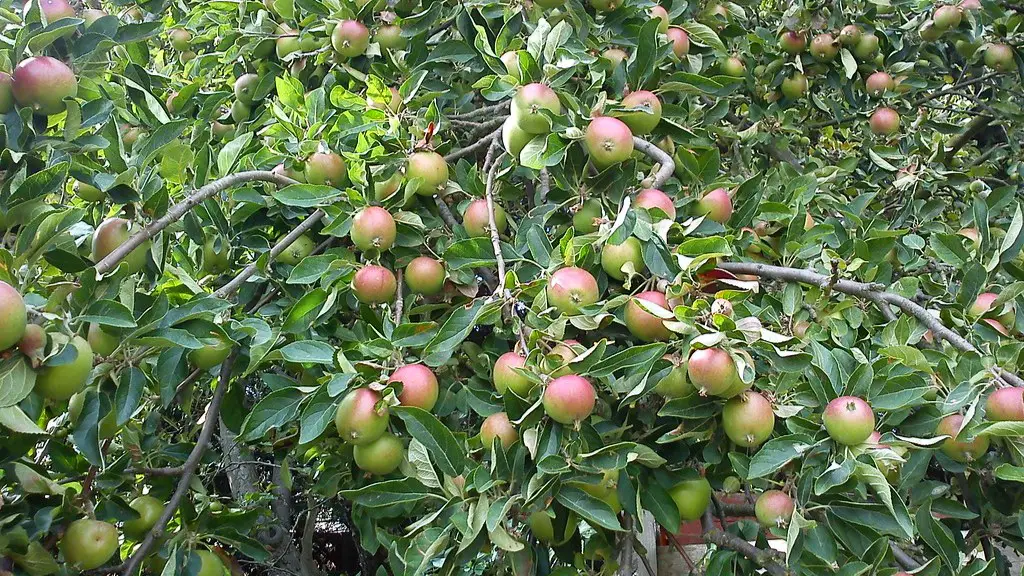When is the best time for UK gardeners to move their lemon trees outdoors? This question is a complex one, and the answer depends on a number of different factors.
Firstly, it’s important to consider the climate. Since lemon trees need very specific temperatures and conditions to thrive, it’s important to identify the zone in which you live in order to know when you can move the tree outside. In the UK, all of the zones experience mild winters and cold, damp summers, so the ideal time to move the tree outside is fairly consistent across the country – you’ll want to move it in late spring/early summer, when temperatures start to consistently stay above 10C.
Secondly, you’ll need to take a look at the health of your tree before deciding when to move it outdoors. If the tree has been kept inside all winter, you’ll need to acclimate it gradually to the outside environment over the course of several weeks. Start by setting the tree outside in dappled shade for one or two hours a day, and then increase the time it’s exposed to outdoor conditions and direct sunlight as the weeks progress. If the tree is already healthy and acclimated to outdoor conditions, you can move it outside any time during the warmer months.
Thirdly, be sure to check the forecast before setting the tree outdoors. If you’re expecting a cold snap, it’s best to hold off until the weather is better. Lemon trees require temperatures consistently above 10C, and they can be damaged or even killed by a sudden frost or cold spell.
Fourthly, it’s essential to provide protection for your tree during the winter months. If you expect cold spells or freezing temperatures, you’ll need to provide shelter for the tree while it’s outdoors. A cold frame, a well-ventilated greenhouse, or a simple tarp can provide the extra insulation needed to keep the tree from freezing.
Finally, it’s important to water and fertilise your tree regularly. Lemon trees require consistent watering and fertiliser treatment, especially during the summer months when the tree is fruit-bearing. Neglecting to water and feed your tree will result in poor growth and fruit yields.
Correct positioning
When putting your lemon tree outside, positioning is key. Ideally, you should choose a spot with plenty of sunlight and good air circulation. If possible, face the tree’s main branches northward, as this will help to protect the tree from strong winds and provide the best conditions for flowering and fruit production. You should also avoid placing the tree too close to walls or other trees, as this can lead to disease and uneven temperatures.
Additionally, make sure the area you chose to plant the tree has good drainage – lemon trees don’t like standing in water for prolonged periods. If your garden doesn’t have adequate drainage, choose another spot for your tree or consider installing artificial drainage.
Finally, it’s important to consider the soil in your garden. Lemon trees need to be planted in nutrient-rich soil, so if your garden has tired or clay-like soil, consider adding a layer of compost or topsoil before planting the tree. Doing so will help to ensure your tree gets the necessary nutrition to thrive.
Winter Protection
When deciding when to move your lemon tree outside during the colder months, winter protection is essential. As the UK climate is quite temperamental, it’s important to take steps to keep your tree safe and healthy during the chillier months. This might involve adding protection against winter weather, such as a cold frame or a tarp, to protect the tree from strong winds, frost and cold snaps. You should also consider adding a layer of mulch around the base of the tree to help insulate it from the cold ground.
Additionally, if the cold winter weather persists for longer than expected, you may need to move the tree indoors for a period of time. Keep an eye on the forecast and be prepared to bring the tree back indoors if temperatures drop unexpectedly.
Finally, you should ensure you pay close attention to the tree’s health and needs over the winter months. Lemon trees tend to go dormant in winter, so don’t expect many signs of growth – however, you’ll still need to provide the tree with adequate water and nutrition to keep it healthy.
Caring for the Tree
Once you’ve found the perfect spot for your lemon tree, caring for it properly is essential. These trees need consistent sunlight, moisture, and nutrition to thrive, so it’s important to pay close attention to the tree’s needs. You’ll need to water it regularly and fertilise it every few weeks during the summer months, as this will stimulate growth and promote fruit production.
Additionally, lemon trees do best with pruning and thinning. Pruning can help keep the tree shaped and attractive, as well as prevent disease and pest infestations. Additionally, thinning the fruit every few weeks can help keep the tree healthy and encourage it to produce more fruit. Additionally, you should also pay close attention to the tree for signs of disease or pests, and take the necessary steps to address any problems if you notice them.
Finally, ensure you provide your tree with a nutrient-rich soil. Lemon trees need plenty of nutrition to thrive, so it’s important to add some organic matter to the soil every few months to help keep it nourished. You should also make sure you add mulch around the base of the tree to help keep moisture in the soil and protect it from weeds.
Organising Your Tree
Organising your lemon tree is essential for a healthy and abundant harvest. When the tree begins to produce fruit, you’ll need to remove any old or damaged fruit to keep the tree healthy. Additionally, you’ll need to train vines and branches to keep the tree organised and encourage a bushy, productive shape. Ensure you check the tree regularly and thin the fruit every few weeks to keep the tree from becoming overcrowded with fruit.
Additionally, you’ll need to monitor the tree for signs of disease and pests, and take the necessary steps to address any problems that arise. Keep an eye out for yellow leaves, wilting, or any other signs of distress – these can indicate a pest infestation or root problems. Additionally, if you notice a sudden drop in fruit production, it may be a sign of disease or pest attack.
Finally, you may need to tie the branches of your tree back regularly to help prevent damage and keep the fruit from getting too heavy. Doing so can help keep the tree organised and ensure you get a plentiful and even harvest.
Pest and Weed Control
Pests and weeds are a constant problem for lemon trees, so it’s essential to be proactive when it comes to controlling them. Keep an eye out for signs of pests and weeds and take the necessary steps to get rid of them. For example, if you notice any pesky aphids, you can wipe them away with an insecticidal soap or use a natural oil spray. Similarly, if you spot any weeds, be sure to remove them right away by hand or with a weed killer.
Additionally, take steps to prevent pests and weeds from affecting your tree in the first place. Regularly inspect the tree and its surroundings for signs of infestation, and remove any debris or dead leaves that may be near the tree. Additionally, keep your tree pruned and thinned regularly to help keep pests and weeds at bay.
Finally, it’s important to use only organic or low-toxicity products when treating your tree. Even natural products should be used with caution as they can still be harmful to plants. Be sure to read the instructions carefully and use all products as instructed for best results.
Harvesting and Storing Your Lemons
Once your tree is producing lemons, it’s time to start harvesting and storing them. Make sure to wait until the lemons are fully ripe before harvesting, as unripe lemons will not store well. To pick, gently twist the lemon and pull it away from the branch – don’t tug or pull, as this can damage the tree. Additionally, take care when harvesting to avoid bruise or damage the lemons, as this can shorten their shelf life.
Next, store the lemons in an airtight container in the fridge, as this will keep them fresh and help them last longer. If you need to store the lemons outside of the fridge, make sure they are placed in a cool, dark spot away from direct sunlight. Additionally, you can also dehydrate or freeze the lemons to make them last longer. Be sure to check the lemons periodically to make sure they are staying fresh and free of pests.
Finally, you’ll need to plan ahead when harvesting. Lemon trees can produce a large number of fruit at once, so you’ll need to have a plan to ensure you don’t have too much produce going to waste. Consider inviting friends and family over to help you with the harvest or consider buying a juicer and preserving the lemons for later. Taking steps to make sure you have a plan for using all of the lemons your tree produces will help make sure you get the most out of your tree.





